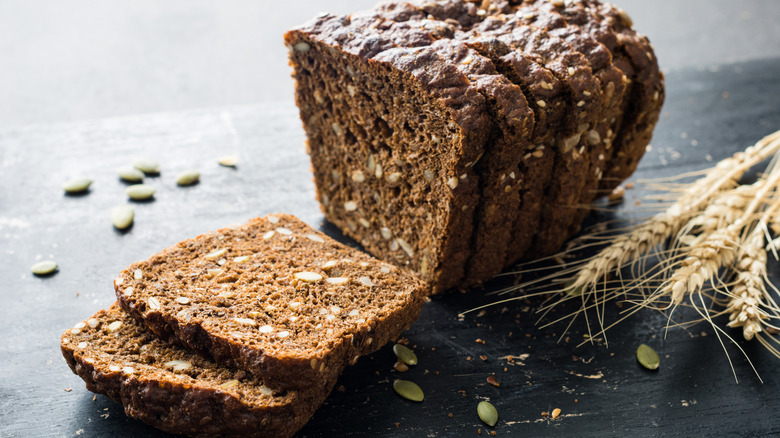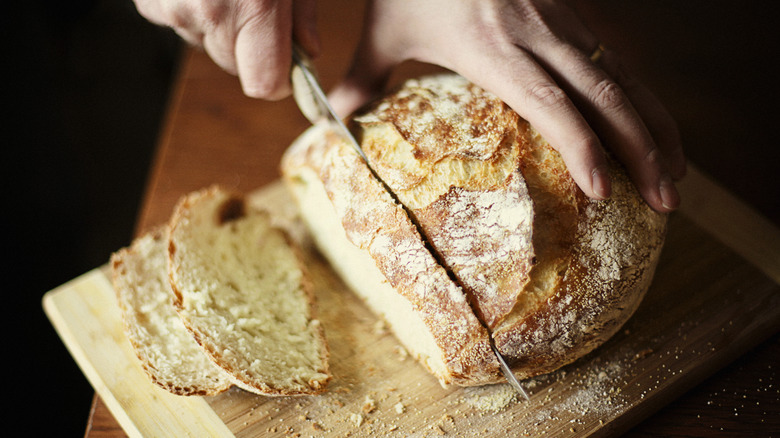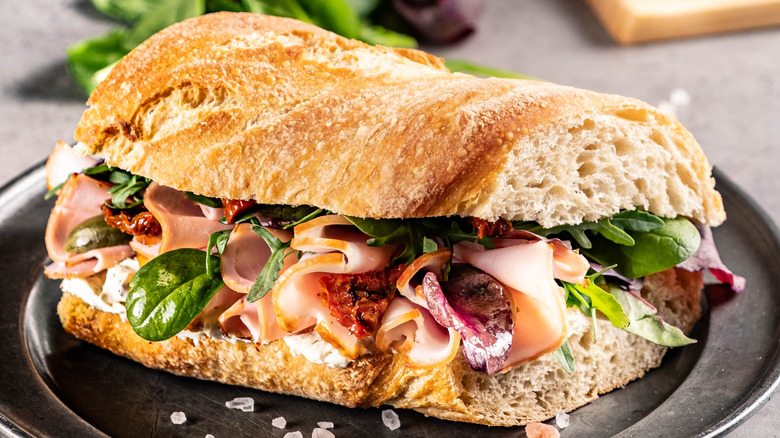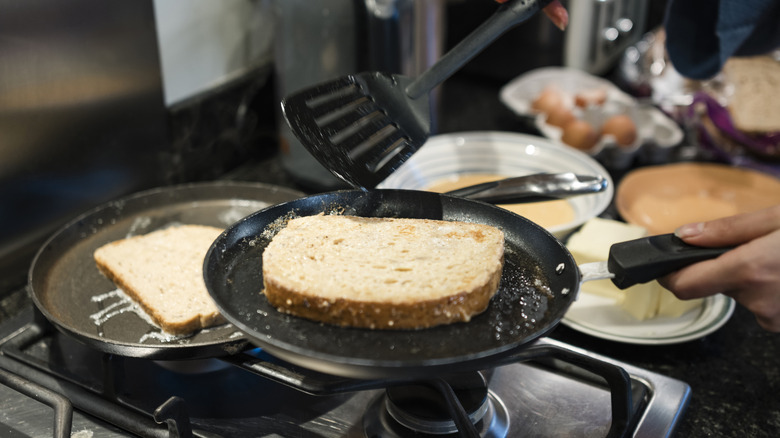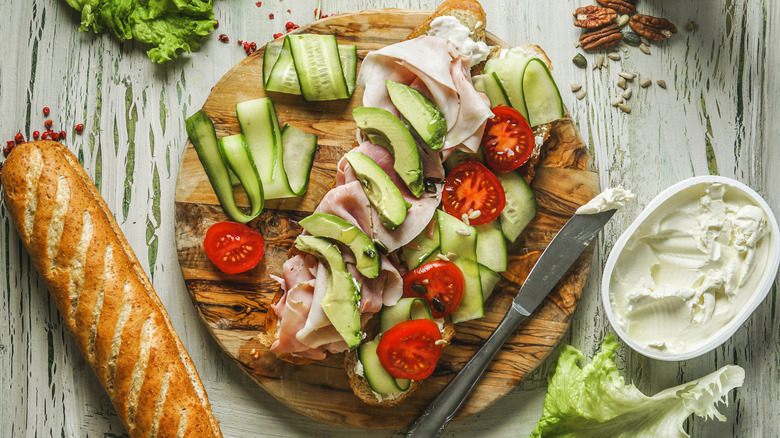5 Tips You Need For Sandwich Bread To Prevent A Soggy Mess
Whether you're making a sweet and savory Monte Cristo sandwich, a melty Cuban, or simply whipping together a classic turkey club for your beloved lunchtime meal, there's one thing every sandwich lover can agree on: Soggy bread has no place here. While one of the best ways to avoid this sandwich faux pas is to eat it as quickly as possible, you may also be looking for some tips and tricks on keeping your bread dry and your lunch crispy well after you've initially made it. Luckily, we've done the heavy lifting for you and have found a few strategies to get the job done.
While some tips obviously depend on what you're actually stuffing into your sandwich (like how a bunch of wet ingredients will probably not be on your side here), one of the most important factors you should focus on is your bread. If you get your bread just right, you'll be well on your way to a mush-free sandwich. From choosing the right type of bread to preparing it properly to ward off moisture, you want to make sure you're going to be chowing down on as fresh, non-mushy a sandwich as possible.
Start with a sturdy sandwich bread
While you may already have your standard sliced supermarket sandwich bread at home, you should consider other options when you're trying to avoid a soggy outcome. For example, instead of using thin white bread (which is still the gold standard when it comes to certain fillings, like peanut butter and jelly or ham, cheese, and mustard), consider grabbing a sturdier variety.
Instead, try a marble rye, pumpernickel, or sourdough. These types of bread are denser, giving them a heftier starting base. They'll be less likely go dissolve under wet condiments, like mayo and mustard, or the dreaded (but delicious) sliced tomato.
When you can, slice it yourself
If you want to go the extra mile, grab a loaf of unsliced sandwich bread from your local bakery (sometimes your supermarket will carry these as well). In this case, using a serrated knife to slice the bread yourself is an easy way to give yourself a sturdier vessel for your sandwich.
Go for slices almost double in thickness of what your standard sliced bread is, which is normally only around ⅜ to ⅝ inches thick. When cutting, aim for your classic Texas toast — those slices come in around ¾ to one inch in thickness, giving you hearty slices that not only help ensure your sandwich avoids getting too soggy but also look really beautiful and artisinal once everything is put together.
Consider other bread types, too
While your standard sturdy sliced sandwich bread can be used, you can also opt to go for other types of bread. For example, hoagies, baguettes, or ciabatta rolls are easy ways to not only ensure your bread stays intact but can also bring some much-needed additional texture.
If you want to get even more wild, you can also consider grabbing some English muffins and using those. They're known for being a surprising underdog when it comes to the best bread to use for grilling sandwiches with soft cheese, so you already know they'll be perfect for a soggy-free experience.
Toast one side of your bread first
One trick when preparing your bread for your sandwich is to lightly toast just one side of it, and use the toasted half as the inside of your sammy. Using this trick will help keep any moisture from your fillings at bay, ensuring each bite is enjoyable.
Just be careful when you actually get to eating your sandwich. The harder surface inside may lead to your cold ingredients — like cold cuts, condiments, and lettuce — sliding out the side of your sandwich. One of those fancy sandwich toothpicks (perhaps unshockingly called sandwich picks or frill picks) can help hold everything together.
Be strategic about your fillings
Now that your bread is covered, the final thing you should consider is your fillings and the best ways to set those up for success. In this case, you want to avoid adding anything too wet. While moist fillings — like pickles, roasted peppers jarred in oil, and olives — are absolutely acceptable and delicious, they just need a little love before they make it to your sandwich. You can easily do this by giving them a proper pat down with some paper towels to soak up any excess moisture.
If you're using sliced tomatoes, you can do the same thing, or you can go the extra mile and sprinkle them with some salt to draw out moisture (similar to how you pre-salt eggplant to avoid a soggy outcome) before patting them dry. Condiments are also an easy way to create a barrier in your bread. Using ingredients like chipotle mayo, roasted pepper spread, or spicy mustard on each slice of bread can help keep moisture from infiltrating your exterior. But hey, you might ask, isn't mayo kind of wet? Yes, but any condiment that has enough fat will naturally wick moisture away, literally stopping it in its tracks.


